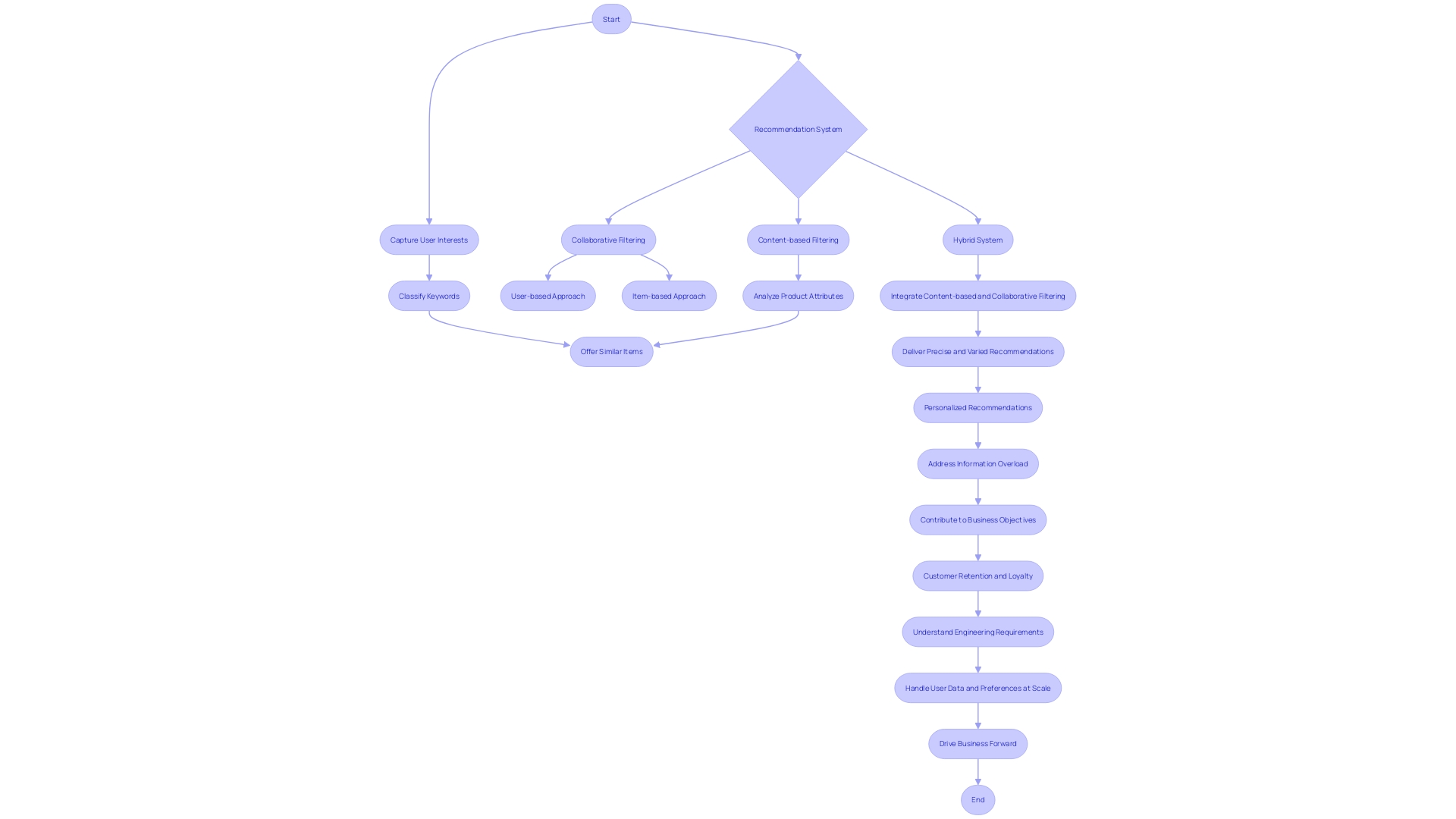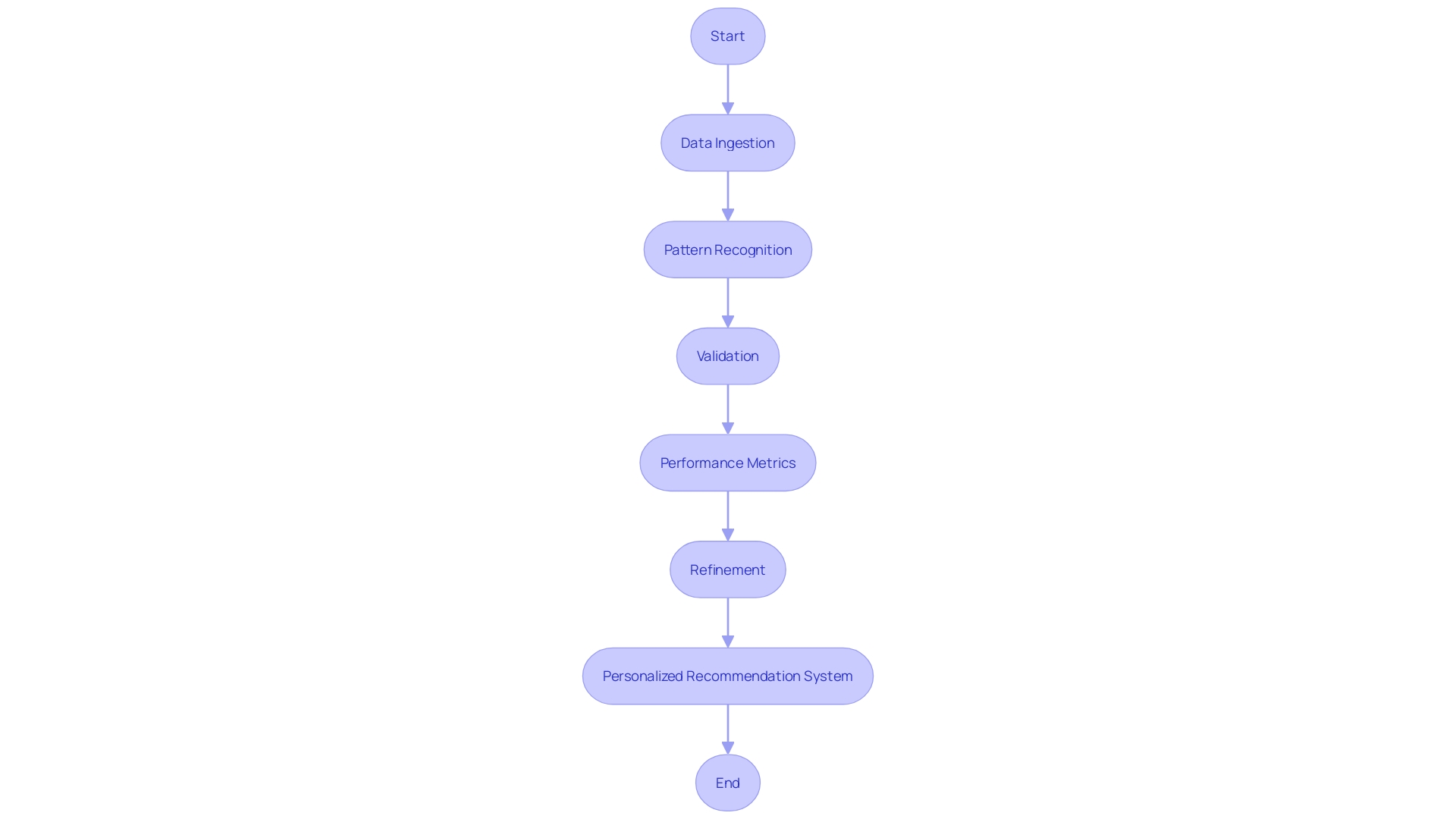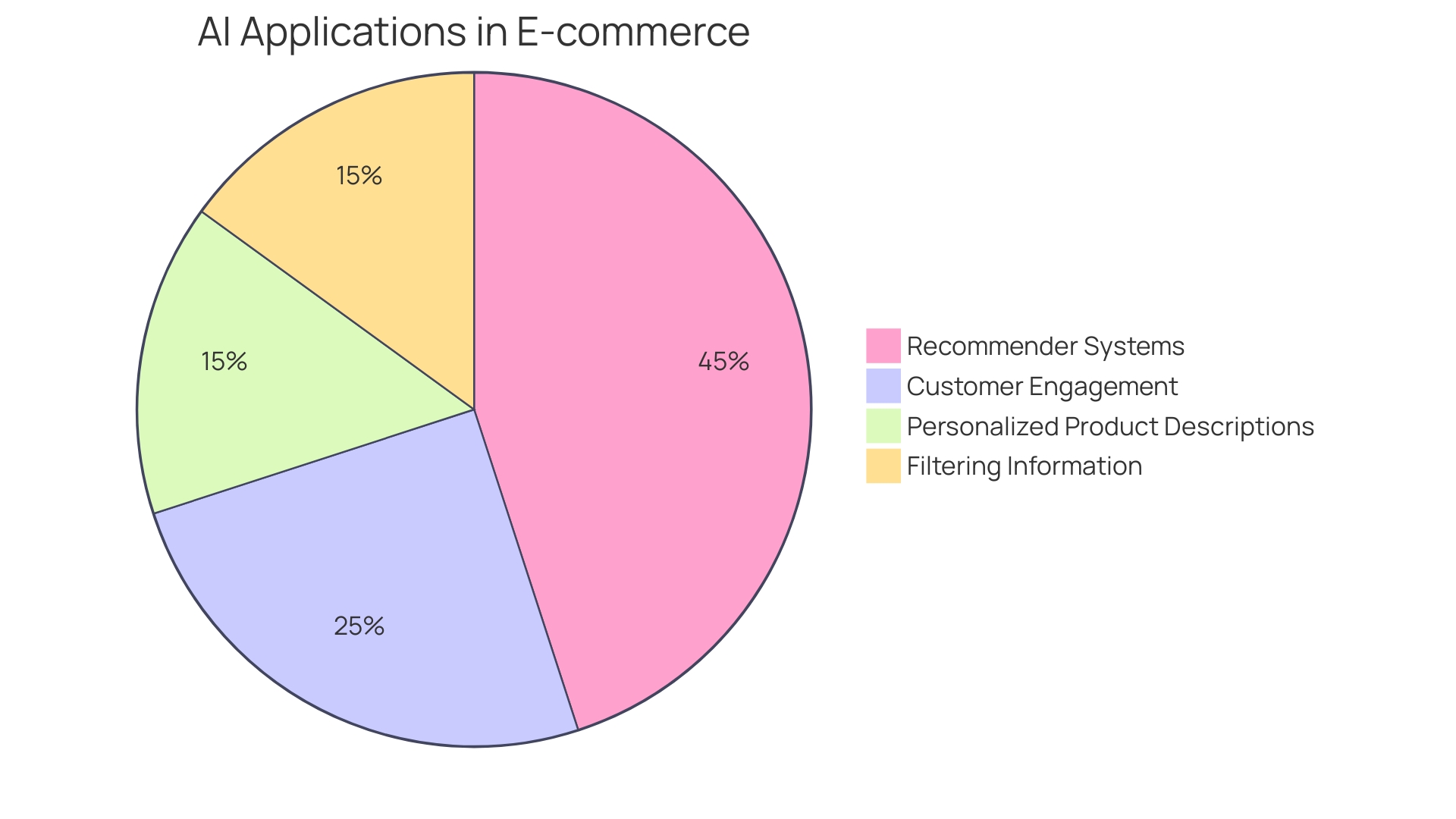Introduction
E-commerce platforms are constantly seeking ways to enhance the product discovery experience for their customers. One popular method is the use of advanced recommendation systems, which leverage algorithms to provide personalized and relevant product suggestions.
These systems, such as content-based filtering and collaborative filtering, analyze user behavior and product attributes to curate recommendations that align with individual preferences. By integrating both content-based and collaborative filtering, hybrid recommendation systems can deliver even more precise and varied recommendations.
The effectiveness of these systems is backed by research, highlighting their ability to address information overload and contribute to business objectives like customer retention and loyalty. However, designing and implementing these systems require a thorough understanding of engineering requirements to handle large-scale user data and preferences. With a well-architected recommendation system, e-commerce platforms can not only meet user needs but also drive their business forward.
Types of Recommendation Systems
E-commerce platforms are increasingly leveraging advanced recommendation systems to enhance product discovery for their customers. Content-based filtering, one of the prominent methods, delves into the attributes of products, analyzing them to offer users items with similar characteristics. Meanwhile, collaborative filtering takes a different approach by considering the preferences and behaviors of like-minded users to curate product suggestions.
This method is further refined into user-based and item-based collaborative filtering, each focusing on distinct aspects of user behavior and product relationships. For a more sophisticated solution, hybrid recommendation systems integrate both content-based and collaborative filtering to deliver precise and varied recommendations. These systems are adept at capturing a user's interests through keywords and classifying their level of interest, ensuring that the recommendations are as personalized and relevant as possible.
The efficacy of these systems is not just theoretical; research underscores their capacity to address the challenges of information overload and significantly contribute to business objectives such as customer retention and loyalty. The design and implementation of these systems require a thorough understanding of engineering requirements, as they must handle the complexity of user data and preferences at scale. With a well-architected recommendation system, e-commerce platforms can provide a service that not only meets user needs but also drives the business forward.

Understanding the Business Need
When contemplating the introduction of a recommendation system, it's crucial to first pinpoint the business objectives you aim to achieve. A well-crafted recommendation system not only tailors the shopping experience to each customer but also drives key business metrics.
For instance, as seen in the case of Estilos SRL, personalized recommendations can significantly enhance user satisfaction, leading to increased customer retention and loyalty. This, in turn, aligns with the organization's broader goals, such as profitability and market share growth.
From an engineering standpoint, high-level requirements must be meticulously defined, such as the system's ability to discern user interests via keywords and gauge the intensity of those interests. Such precision in capturing user preferences is instrumental in delivering a bespoke experience that resonates with the user's unique needs and desires. It's this intersection of technical prowess and business acumen that propels a recommendation system from a mere concept to a dynamic engine of e-commerce growth.
Step 1: Data Collection and Preprocessing
Crafting an AI-driven recommendation system for your e-commerce platform involves meticulous data preparation to ensure the engine's precision and effectiveness. Initially, it is essential to curate a rich dataset encompassing detailed product attributes, compelling descriptions, and genuine customer feedback.
More than just static product data, capturing dynamic user interactions is crucial. This includes not only their purchases and browsing patterns but also their engagement with products, expressed through ratings and reviews.
The adage 'Garbage In, Garbage Out' (GIGO) resonates profoundly in this context, highlighting that the system's recommendations are only as good as the data fed into it. To transform raw data into a gold mine for your AI algorithms, rigorous preprocessing steps are required. This process involves scrubbing the data to eliminate inaccuracies, redundancies, and formatting it into a structured form that algorithms can efficiently process. By focusing on high-quality input, your recommendation system is poised to deliver personalized, keyword-rich experiences that resonate with each user's unique preferences, ultimately enhancing customer satisfaction and boosting conversion rates.
Step 2: Building the Recommendation Model
Building a recommendation model is a pivotal step in enhancing the e-commerce user experience. It involves meticulously choosing the right algorithm that aligns with the data's nature and the platform's unique needs.
Options range from collaborative filtering, which taps into collective user behavior, to sophisticated deep learning models that can uncover complex patterns in the data. It's not just about selecting an algorithm, though.
The engineering perspective necessitates a system that can not only identify but also gauge the depth of a user's interest based on their interactions, as indicated by keywords and behaviors. This requires a recommendation system that's fine-tuned to understand and predict customer preferences with precision. To achieve this, engineers must iterate, test, and validate different models, ensuring that the chosen solution not only captures interest but also reflects the varying levels of user engagement. It's a nuanced process, one that hinges on the intricate dance between user data and algorithmic efficiency, ultimately aiming to deliver personalized recommendations that resonate with users and drive business value.
Step 3: Training and Validating the Model
Building a robust recommendation model is akin to cultivating a digital garden - it requires meticulous planning, constant nurturing, and a keen understanding of the ecosystem. The initial phase involves infusing the model with historical data, allowing it to discern intricate patterns and relationships between consumer preferences and product offerings.
This process is not merely about data ingestion; it's about instilling the model with the ability to anticipate user needs. Validation is the crucible through which the model's reliability and accuracy are tested.
By partitioning the data into distinct training and testing sets, one can gauge the model's proficiency through performance metrics. Precision, recall, and accuracy are not just abstract concepts; they are the pillars that support the model's ability to deliver relevant and personalized recommendations.
Refinement is a journey, not a destination. It requires a judicious blend of parameter adjustments, model retraining, and the exploration of diverse techniques. The goal is to evolve a system that not only captures user interests through keywords but also gauges the depth of their engagement with specific products. The end result? A recommendation system that feels less like a tool and more like a trusted confidant, guiding users through their online journey with personalized insights and suggestions.

Step 4: Generating Recommendations
When a recommendation system is adeptly deployed on an e-commerce platform, it transforms into a dynamic tool that fine-tunes itself with every user interaction. By meticulously capturing a user's preferences through keywords and behaviors, the system can offer personalized product suggestions that are not just relevant but are also a reflection of the user's current interests. These suggestions can be integrated seamlessly across various customer touchpoints including, but not limited to, curated sections on the website, tailored emails, or even through precisely targeted ads.
The AI doesn't stop at mere data collection; it delves into natural language processing to discern user queries and interactions, extracting themes and sentiments. This level of analysis allows the AI to understand the nuances of what the shopper is seeking. It takes into account the length of time spent on interactions, the frequency of similar content being viewed, and situational context, such as local weather conditions, to make the recommendations as timely and diverse as possible.
The goal is to enhance the user experience by providing a selection that feels handpicked and considerate of their unique preferences. It's a balance of technology and human touch, where every recommendation feels like it's been thoughtfully chosen just for them. The numbers are clear; AI is no longer a futuristic concept but a present-day reality that, when harnessed correctly, can lead to substantial growth in customer satisfaction and sales.

Step 5: Implementing Feedback Loops
Enhancing an e-commerce product recommendation system is a critical task that involves nuanced engineering and an understanding of user behavior. To fine-tune such systems, it's imperative to establish robust feedback mechanisms.
These mechanisms capture user engagement through several metrics, including user ratings, reviews, and click-through rates. For instance, a system engineered to handle the influx of hundreds of thousands of events per second must be adept at interpreting this data to discern a user's precise interests, pinpointed through keywords, and their degree of interest in various product categories.
By analyzing user interactions and feedback, engineers can gain valuable insights, leading to a more tailored and dynamic recommendation experience. This continuous improvement cycle ensures that the recommendation system remains responsive to the evolving preferences of users, thereby fostering a more personalized and satisfying shopping journey. As recommender systems increasingly influence our daily decision-making, the stakes for optimizing these systems have never been higher, making the integration of user feedback into the system's architecture indispensable.
Using GPT for Building a Recommender System
Harnessing the capabilities of Generative Pre-trained Transformers (GPT) for e-commerce recommender systems represents a significant leap forward in personalized online shopping. The essence of GPT lies in its ability to analyze text with a near-human understanding, which can be fine-tuned with your platform's unique data.
This customization enables GPT to discern intricate patterns in user behavior and preferences, making it adept at generating product descriptions and recommendations that resonate on a personal level with shoppers. The implementation of AI in e-commerce is not just a trend; it's a transformation.
Artificial Intelligence, through machine learning algorithms, is redefining the way online platforms engage with consumers. By personalizing the shopping experience, AI taps into the individual needs and desires of users, showcasing items that align with their previous interactions and searches.
This not only improves the customer journey but also supports your platform in combating the challenge of information overload—where the sheer volume of available data can overwhelm rather than assist. In practice, these advanced NLP algorithms become an interface between your platform and your users, understanding their intent and delivering services that feel tailor-made. As we navigate the vast digital landscape, where every click and search generates data, Ai's role in filtering this information to present valuable insights and suggestions becomes invaluable. The successful deployment of a GPT-based recommender system can significantly enhance the user experience, leading to increased engagement and, ultimately, sales.

Conclusion
In conclusion, advanced recommendation systems play a crucial role in enhancing the product discovery experience for e-commerce platforms. By leveraging algorithms like content-based and collaborative filtering, these systems provide personalized and relevant product suggestions based on user behavior and attributes.
The integration of both content-based and collaborative filtering in hybrid recommendation systems allows for even more precise and varied recommendations. Research has shown that these systems effectively address information overload and contribute to business objectives such as customer retention and loyalty.
Designing and implementing recommendation systems require a thorough understanding of engineering requirements to handle large-scale user data. It is important to curate a rich dataset encompassing detailed product attributes and dynamic user interactions, ensuring data quality through rigorous preprocessing steps.
Choosing the right algorithm is crucial in generating personalized recommendations that align with the platform's unique needs. The model should be fine-tuned to understand customer preferences with precision, capturing both interest and depth of engagement.
Deploying a recommendation system transforms it into a dynamic tool that continuously adapts based on user interactions. By capturing user preferences through keywords and behaviors, the system seamlessly offers personalized product suggestions across various touchpoints.
Implementing feedback loops is essential for continuous improvement by analyzing user engagement metrics such as ratings, reviews, and click-through rates. This ensures that the recommendation system remains responsive to evolving user preferences. Harnessing Generative Pre-trained Transformers (GPT) represents a significant advancement in personalized online shopping. GPT's near-human understanding enables it to generate product descriptions and recommendations that resonate on a personal level with shoppers. In conclusion, well-architected recommendation systems not only meet user needs but also drive e-commerce businesses forward by enhancing the customer experience, increasing engagement, and ultimately boosting sales. The successful deployment of these systems requires technical expertise combined with business acumen to create personalized experiences that align with users' unique preferences.
Experience the power of personalized recommendations and boost your e-commerce business today!





